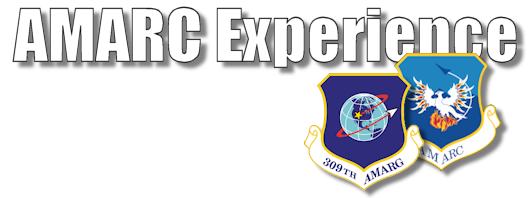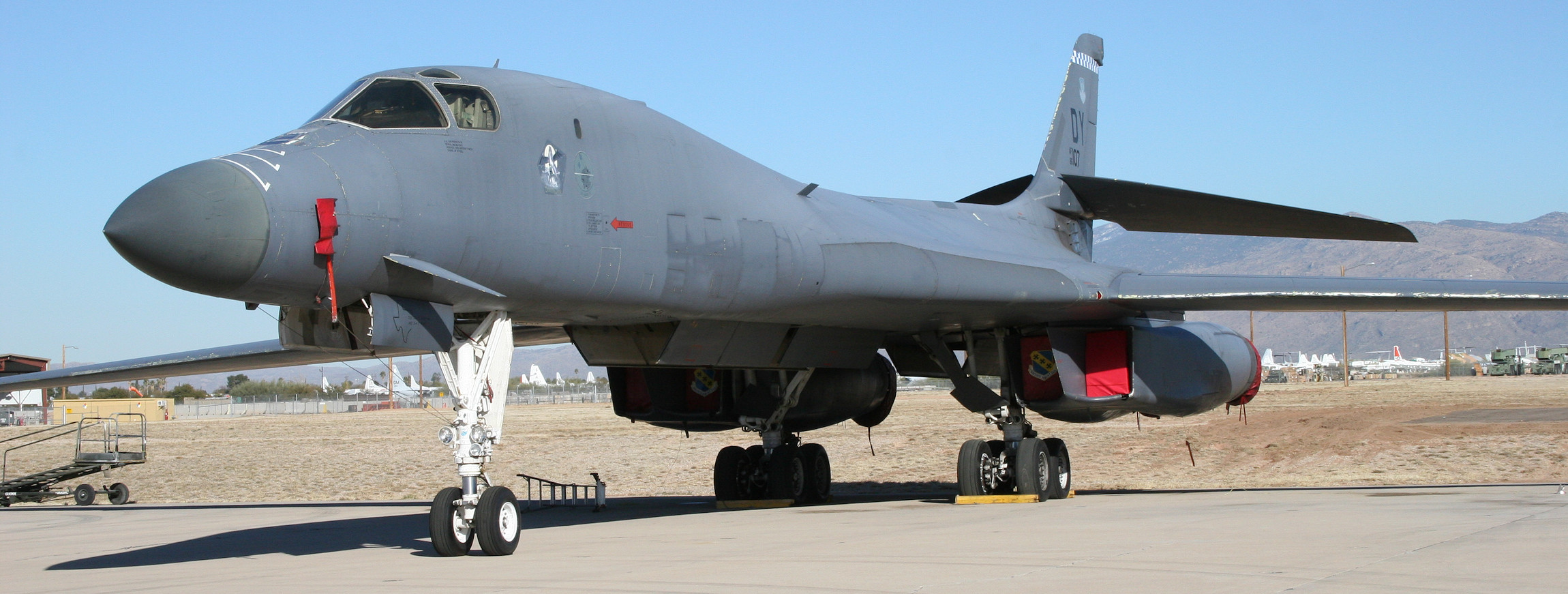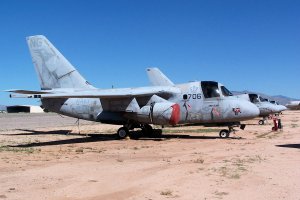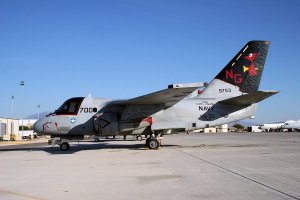Another 'victim' of time and the US Navys move to modernise and rationalise its aircraft fleet, the 25 year old Lockheed S-3 Viking is nearing the end of its service life and the fleet is gradually arriving at AMARC to be retired. During the S-3 Viking's service with the US Navy it has been modified to fulfill a number of operational roles as the needs of the US Navy airwings have changed. It has proved to be a very successful and versatile carrier based platform but due to its age and its missions being transitioned to more modern aircraft types it is planned that all S-3 Vikings are to be retired by 2007.
Originally designed as an Anti-Submarine Warfare (ASW) platform, the S-3A first flew on January 21, 1972. and when it was introduced into service in 1974 it replaced the aged, piston powered Grumman S-2 Tracker. Powered by two General Electric turbofan engines the improved performance, operational range and latest electronic weapon systems significantly improved the Navy's Anti-Submarine Warfare (ASW) and Surface Surveillance capability. The ability to carry an inflight refueling 'buddy' pack increased the S-3s value by allowing it to transfer fuel to other aircraft to increase their combat range.
The four man aircrew consists of a pilot, Copilot Tactical Coordinator (COTAC), acoustic Sensor Station Operator (SENSO), and Tactical Coordinator (TACCO), all seated in ejection seats. Due to its size the S-3 has folding wings and a folding vertical tail to allow storage on aircraft carriers. The last S-3A was delivered in August 1978 after the production of a total of 187 aircraft.
Lockheed S-3B Viking 160162. This aircraft was with VS-41 based at NAS North Island, CA. before retirement to AMARC. © Phil Kovaric
Between July 1987 and July 1991, all east coast S-3A Aircraft were modified to S-3B standard at Naval Air Station (NAS) Cecil Field, FL. The west coast aircraft were modified at NAS North Island CA. between March 1992 and September 1994. The modifications involved upgrades to the aircraft's general purpose digital computer, acoustic data processor, radar, sonobuoy receiver, sonobuoy reference system, and electronic support measures. It also involved the installation of an electronic countermeasures dispensing system and the Harpoon Missile System.
With the end of the Cold War and the reduced threat from Soviet block submarines the S-3B's mission was moved away from the ASW role to an Anti-Surface Warfare (SUW) role, being used for surveillance and precision-targeting using advanced weapon systems including Harpoon and Maverick missiles and the AGM 84 Standoff Land Attack Missile Extended Range (SLAM-ER) missile.
Over the years there have been a series of upgrades to the S-3B fleet, helping to maintain its effectiveness and viability as a modern combat aircraft. During the mid 1990s the S-3 took over principal inflight refueling and offensive mine laying responsibilities from the Grumman KA-6D Intruder which was retired from service at that time. Other variants of the S-3 include the ES-3A Shadow (carrier-based electronic reconnaissance), CS-3A (cargo version), KS-3A (dedicated tanker), and US-3A (personnel transport, or COD aircraft), only the S-3B is currently in service. You can see more information and pictures of the ES-3A Shadow using the link available above.
Sikorsky SH-60B/F "Seahawk" helicopters and land-based P-3C "Orion" maritime patrol aircraft have now taken over the anti-submarine warfare mission, while the inflight refueling mission is currently being transfered over to the advanced and multifaceted F/A-18 E/F Super Hornet.
On January 29th, 2009 the US Atlantic fleet officially disbanded VS-22, its last S-3B squadron.
VX-30 'Bloodhounds'
The very last US Navy squadron to operate the S-3B is VX-30 based at NAS Point Mugu, CA. They currently have three aircraft assigned to them which are used for surveillance and clearance of the 36,000 square mile Sea Range, the Department of Defense’s largest overwater missile test range. During 2010 these aircraft received 10 months of depot-level restoration, referred to as Planned Maintenance Interval (PMI) 1, 2 and 3, by the Fleet Readiness Center Southeast (FRCSE), Jacksonville, FL. This work will extend the service life of the S-3Bs by a further five to six years. The first S-3B delivered to VX-30 during June 2010, 160147 (coded BH-700), was reported to have been written off on November 14, 2012. Other aircraft reported to be assigned to VX-30 are 159746 (coded BH-702), 160581 (coded BH-701) and 160601 (coded 30-X-701).
NASA
As well as the VX-30 S-3Bs three more have found a new one with NASA. In 2008 S-3B 160607 became NASA 601 and was delivered to NASA Glenn Research Center in Cleveland, OH. after spending two years at NAS Jacksonville, FL. undergoing modifications. Its new role is to act as a research platform, a role that NASA says the S-3 is ideally suited for. A 2nd S-3 is being used as a ground test vehicle and a 3rd is being stored for potential use in the future.
Specifications
General Specifications| Powerplant | 2 × General Electric TF34-GE-2 turbofans, 9,275 lbf (41.26 kN) each |
| Length | 53 ft 4 in (16.26 m) |
| Wingspan |
Unfolded: 68 ft 8 in (20.93 m) Folded: 29 ft 6 in (9.00 m) |
| Height | 22 ft 9 in (6.93 m) |
| Wing area | 598 ft² (55.56 m²) |
| Empty weight | 26,581 lb (12,057 kg) |
| Max. takeoff weight | 52,539 lb (23,831 kg) |
| Crew | Four (Pilot, Two × Naval Flight Officers, Sensor Operator/TFO) |
Performance
| Maximum speed | 493 mph (429 knots, 795 km/h) at sea level |
| Cruise speed | 405 mph (350 knots, 650 km/h) |
| Range | 3,182 miles (2,765 nm, 5,121 km) |
| Ferry range | 3,875 miles (3,368 nm, 6,237 km) |
| Service ceiling | 40,900 ft (12,465 m) |
| Rate of climb | 5,120 ft/min (26.0 m/s) |













